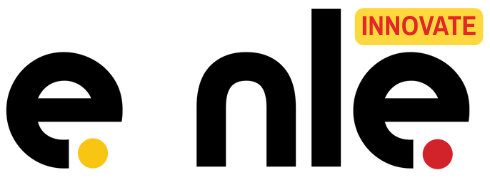A design-led approach places user experience at the heart of product and business development. Instead of focusing solely on functionality or market trends, it begins with understanding the needs, desires, and behaviors of users. This user-first perspective enables companies to craft tailored solutions that are both relevant and engaging, offering a competitive edge through meaningful experiences.
One of the key practices in design-led thinking is iterative prototyping. This involves creating multiple drafts or versions of a product, each improved by incorporating feedback from users. By continuously refining the design based on real-world insights, companies can ensure their solutions are both practical and appealing. This approach also reduces the risk of launching features that don’t resonate with customers.
Design-led companies also benefit from agility, allowing them to quickly respond to changing market demands. For startups especially, this responsiveness is crucial. By embracing a design mindset, startups can foster innovation, stay adaptable, and differentiate themselves in crowded markets. This culture of creativity and user-focus helps businesses remain competitive and build long-term relationships with customers.
Empathy for Users: A Core Principle
Empathy is at the core of successful design-led thinking, especially for startups aiming to create products that deeply connect with users. It goes beyond surface-level usability and focuses on understanding the real emotions, struggles, and goals of the target audience. When companies prioritize empathy, they design products that solve meaningful problems and deliver real value.
To develop this empathy, startups must invest in user research techniques such as interviews, surveys, and focus groups. These methods provide valuable insights into how users think and behave. By listening actively and asking the right questions, teams can uncover the motivations and pain points that influence user decisions, ultimately leading to more relevant and personalized solutions.
Ongoing feedback is equally important in maintaining empathy throughout the product lifecycle. Startups should seek input not just at the beginning but during every stage of development. Tools like usability testing and interactive prototypes help gather actionable feedback. By continuously integrating user insights, startups can create more effective and loved products while building trust and loyalty among their customer base.
Iterative Design and Prototyping Techniques
Iterative design is a powerful methodology that helps startups reduce risk and build better products by improving through repeated cycles. Rather than aiming for perfection on the first attempt, teams use early versions of a product to test ideas and gather feedback. This ongoing process allows for flexibility and constant refinement based on user needs and behavior.
Rapid prototyping is a common tactic used in this approach. Startups create minimal viable products (MVPs) or low-fidelity mockups to validate assumptions quickly. These prototypes are shared with users to collect feedback and identify potential improvements before investing heavily in full development. This saves time, reduces costs, and increases the likelihood of product-market fit.
A/B testing is another vital tool in iterative design. By comparing two versions of a product or feature, teams can understand which design choices users prefer. These insights inform decisions about what to build next or how to optimize existing features. Adopting a mindset of experimentation and learning enables startups to evolve quickly and deliver solutions that better meet the demands of their market.
Building a Culture of Collaboration and Innovation
A strong culture of collaboration is a hallmark of design-led organizations, and it’s essential for startup success. Cross-functional teams comprising individuals from design, engineering, marketing, and more encourage a blend of perspectives and skills. This diversity fosters creative problem-solving and helps generate more comprehensive, well-rounded solutions.
Embracing different viewpoints and backgrounds leads to richer conversations and more innovative ideas. Startups can foster this by encouraging open dialogue through brainstorming sessions, team workshops, or informal discussions. When all team members feel heard and valued, they are more likely to contribute original thoughts that can spark breakthrough innovation.
Encouraging diverse viewpoints is essential for cultivating an inclusive atmosphere where creativity can thrive. Startups should actively seek to assemble teams composed of individuals with varying experiences and backgrounds. This diversity enriches discussions, challenges assumptions, and stimulates fresh ideas, which are crucial components of the design process. Workshops, brainstorming sessions, and informal gatherings can facilitate the sharing of ideas and encourage open dialogue among team members, further enhancing collaborative efforts.
The physical and cultural environment also plays a role in encouraging collaboration. Startups should consider workspace design that supports both focus and communication open layouts for sharing ideas and private areas for deep work. Promoting creativity through inspiring visuals or flexible setups reinforces the design-led mindset. Together, these strategies help cultivate an environment where innovation and teamwork can thrive.
Ultimately, instilling a design-driven culture from the outset will promote teamwork and drive product excellence within startups. By prioritizing collaboration and innovation, organizations can lay the groundwork for sustained success and adaptability in a competitive landscape







Leave a Reply